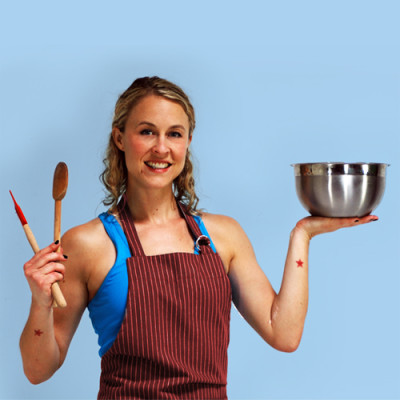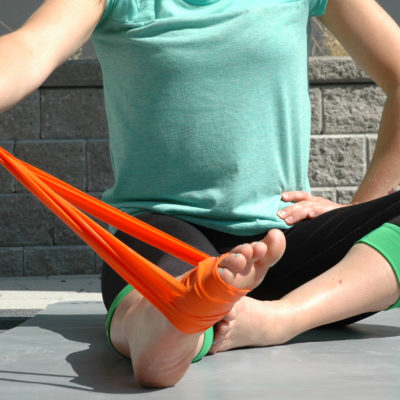
Now that we’ve learned a little bit about what comprises dietary fat; which ones we should be getting more of and which ones we should be steering clear of, let’s add some healthy fats into our diets!
For me, incorporating more fat isn’t about whole new recipes so much as making tweaks to my favourite dishes. Fats make great sauces, drizzles, toppers, add-ins, thickeners, and frying material – it’s just a matter of choosing which fat to add where.
First a quick review –
Which fats do I want to start eating more of?
Monounsaturated fats: the fats that come from seeds and seed oils, nuts and nut oils, olives and olive oil, and avocados and avocado oil.
Omega-3 Polyunsaturated fats: the fats that come from marine oils, like fish and krill oils.
and though you’re probably eating enough of it, don’t forget to include some well-sourced saturated fat in your diet.
And how much of each should I eat?
Split your fat intake into thirds between saturated, monounsaturated, and polyunsaturated. Split your polyunsaturated intake evenly between Omega-6 (vegetable and corn oils) and Omega-3.
Cool, now what?
Let’s get to some tasty ways to add healthy fats to the meals you already love!
First, saturated fat. Saturated fats come from animal products, so you’re likely already getting these fats from your intake of meat and dairy. That being said – there are little changes that you can make to ensure you’re getting the best saturated fat possible. Here are some tips:
Fry your stuff in ghee, coconut oil, or the drippings from cooking meat.
Ghee is clarified butter with a high smoking point, which makes it great for frying (as opposed to olive oil, which is better suited to be used as a dressing). Coconut oil can also be used, as it has similar properties (and is cool for the vegans). You can also save the drippings from cooking fatty meats and use them for future frying – What’s that? Everything tasting like bacon? Sounds like a plan to me.
Use whole dairy in coffee or tea – or, as Booty will test in a later post, try some Bulletproof Coffee (coffee with grass-fed butter and MCT oil).
Using higher fat dairy products – milk, cream, cheese, yogurt – is an simple way to incorporate more saturated fat into your daily routine.
Next, there are lots of yummy ways to get more monounsaturated fat into your diet.
Use infused olive oil instead of creamy salad dressings.
Homemade salad dressing are SO easy. All you need to remember is this: 3:1 oil to vinegar. For example, a homemade balsamic vinaigrette only needs 1 C EVOO, 1/4 C balsamic vinegar, and salt and pepper. You can add other herbs and spices, but you don’t have to make it complicated. For a homemade Italian dressing, keep the same oil to vinegar ratio, add 2 tsp Dijon mustard, 1 tsp honey, some finely diced bell pepper, some red pepper flakes, salt, pepper, oregano, basil and marjoram to taste. It’s almost as easy as shaking up the bottle.
Add avocado to thicken smoothies and sauces – or as a sauce on its own.
Avocado is a fantastic addition to thin smoothies or not-creamy-enough sauces. You can add it to salad dressing. You can use it instead of mayonnaise. Or just eat is as guacamole. Or make it into ice cream – the possibilities are endless!
Crust your proteins in or top your dishes with nuts and seeds.
Nuts and seeds are a great snack on their own, but can also top a salad or yogurt, be spread as butters, or be used to “bread” your proteins. You can use any sort of nut or seed for a crust – almond and flax meal are two of my favourites. For a healthy shake-and-bake, try this:
Ingredients: boneless, skinless chicken breasts, almond meal, paprika, salt, pepper, cumin, cayenne pepper
Preheat your oven to 375 degrees. Grease a cookie sheet (with ghee or coconut oil!). Combine 1C almond meal (finely crushed almonds) with 1 tbsp paprika, and cumin, cayenne pepper, sea salt and pepper to taste and put it on a plate. Dredge some chicken-finger sized pieces of chicken in egg, then cover in the almond meal. Set on the cookie sheet – bake 20-25 minutes until golden brown. Delish!
Finally, polyunsaturated fats – especially those high in Omega-3.
Take your fish oil.
Daily fish oil has a host of benefits that we’ll get into somewhere down the road. It’s also one of the easiest ways to add a substantial amount of omega-3 into your diet. Don’t like the taste or texture? Hide it in a smoothie.
Make a concerted effort to eat more fish, or, if you’re vegetarian, more walnuts, chia, flax ,and leafy vegetables.
Work fish into your family meal plans, snack on tiny fish like pickled herring, sardines, or anchovies (they’re way less gross than you thought they were when you were a kid), keep canned salmon or tuna in the house for when you’re in a rush. For non-meat options, snack on walnuts, toss hemp hearts or ground up flax seeds onto your dishes, make chia gel (1:9 chia to water) and add it to cereals, yogurts, sauces and smoothies – all of those foods are high in ALA, which the body can convert to DHA and EPA. Vegetarians can also look into DHA supplementation.
There are SO many ways to eat more healthy fat – you’re only limited by your imagination! Go forth and feast on fats!

 Prehab! Feet and Ankles
Prehab! Feet and Ankles  How to Improve at Derby’s 27 Laps Test
How to Improve at Derby’s 27 Laps Test  Cross-Training for Roller Derby: A Primer
Cross-Training for Roller Derby: A Primer  Fresh Meat – You Got This!
Fresh Meat – You Got This!  The Top Ten Exercises for Roller Derby Athletes
The Top Ten Exercises for Roller Derby Athletes